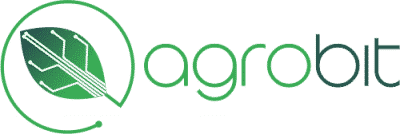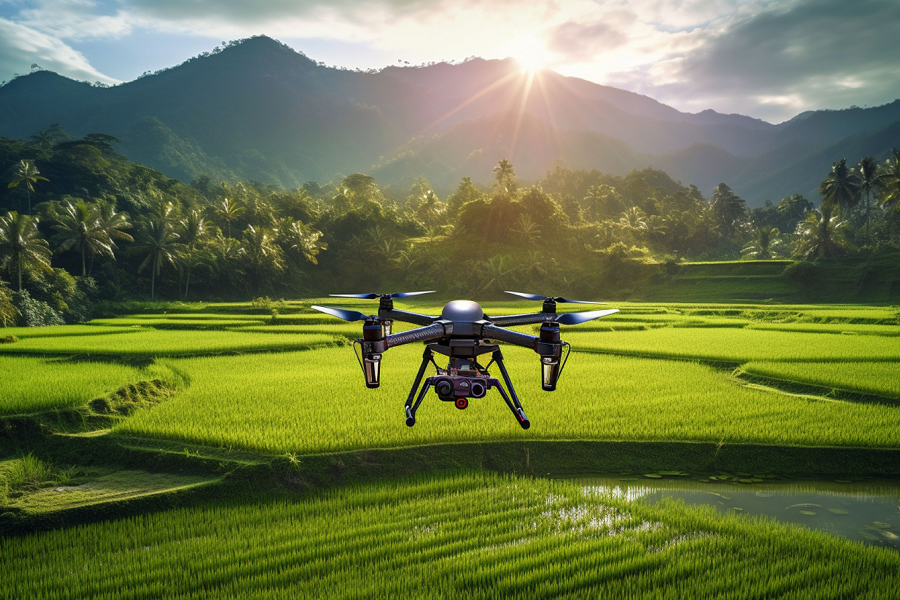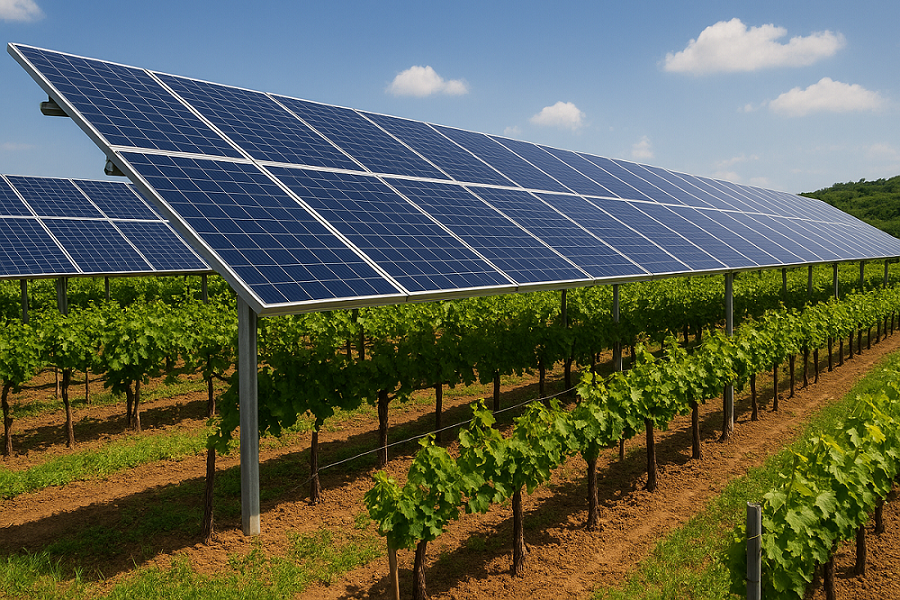by Luana Centorame
Share
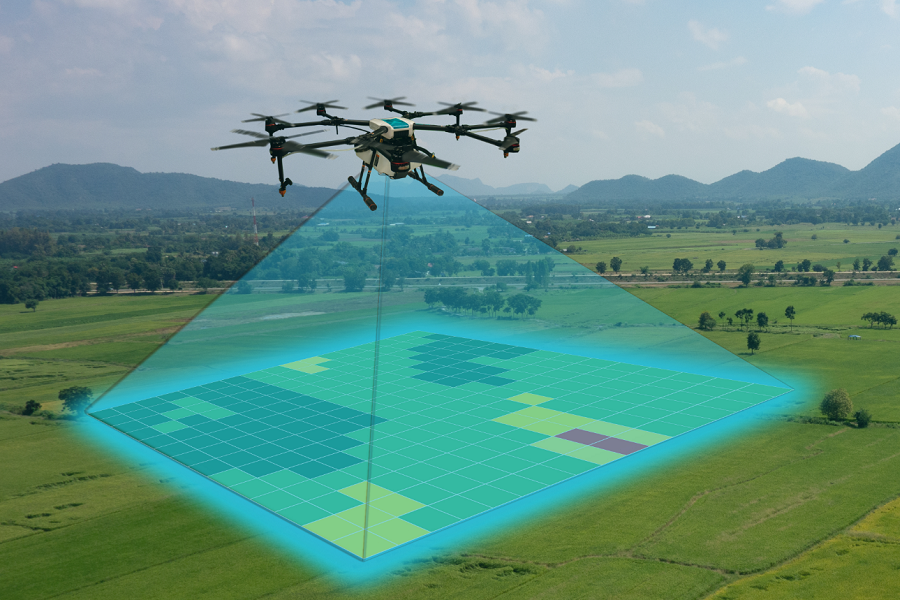
Introduction
In recent years there has been an increasingly widespread diffusion of technologies in agriculture, especially of monitoring and data acquisition tools. The reason is simple: data are valuable in order to act rationally in the field, saving time and resources.
One of the key factors is to customize the supply because each farm has specific needs and different investment capabilities. Certainly, the economic issue is the hottest one because it could limit the spread of precision farming, especially in Europe where the majority of farms have an area of less than 10 hectares.
In this context, sensor-equipped drones offer an affordable solution and enable accurate information without expensive infrastructure, even considering contracted services. Agrobit offers the service iDrone for aerial photogrammetry, creation of rgb, multispectral and thermal maps, prescription maps, 3D models and advanced data processing. To learn more about the services offered you can read the dedicated article iDrone: the drone as a powerful ally of the agronomist.
Drone sensors
The objective of this article is to provide an overview of sensors that can be equipped aboard remotely piloted aircraft, or drones.
Let’s start with the basics-what is a sensor? Technically, it is a device that can detect a physical quantity (e.g., temperature, humidity, reflected light) and translate it into interpretable digital data. More simply, sensors are “eyes” that collect information in the field, and the agronomist is the “operational mind” that interprets them through advanced data analysis techniques and declines them into operability through his or her experience. By capturing reflected light from vegetation, it is possible to construct the spectral signature of vegetation, a true fingerprint (Figure 1). Each region corresponds to specific characteristics of the plant, for example in the infrared it is possible to characterize the cellular structure of leaves.
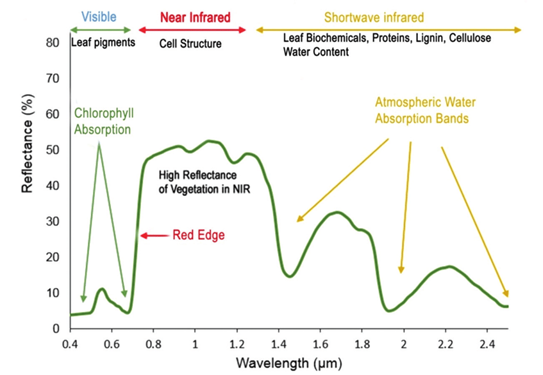
Fig.1: Spectral signature of vegetation (source: Roman, Anamaria & Ursu, Tudor. (2016). Multispectral satellite imagery and airborne laser scanning techniques for the detection of archaeological vegetation marks).
Why use drone sensors? The main objectives are:
- Analysis of crop health status by calculating vegetation indices (NDVI, VARI, NDRE, GNDVI depending on the available sensor).
- Optimization of resources used by making appropriate index-based prescription maps, e.g., for irrigation and fertilization.
- Early detection of phytosanitary and insect-pathogen attacks, often invisible in the early stages.
- Agronomic decision support with site-specific interventions.
Sensor types.
The drone flies over the crop at low altitude and collects information by sensor. The main types of sensors are RGB, multispectral, thermal and LiDAR (Figure 2). Hyperspectral sensors also exist, but they are still the preserve of the research world only due to high purchase costs.

Fig.2: Examples of commercial sensors for each sensor type. From left: RGB, multispectral, thermal, LiDAR.
RGB sensors provide high-resolution images in the three primary color channels: red (R), green (G) and blue (B). In practice, they simulate the human eye’s ability to observe its surroundings and act similarly to the smartphone camera. The advantage is the ability to capture highly detailed images from which georeferenced field maps, 3D models, plant counts, visual analysis of crop condition, and visible damage detection can be derived.
Multispectral sensors acquire images in bands of the electromagnetic spectrum not visible to the human eye, e.g., infrared and red edge. This allows for a more in-depth analysis of plant health. In particular, accurate vegetation indices such as NDVI (Normalized Difference Vegetation Index), NDRE (Normalized Difference Red Edge Index) or GNDVI (Green Normalized Difference Vegetation Index) can be calculated. These indices are functional for early detection of abiotic and biotic stresses. Through vegetation indices it is possible to construct thematic maps that are representative of the field, for example, the NDVI index is used to create the vigor map (Figure 3). Such a map makes it possible to monitor canopy biomass and identify less vigorous areas.
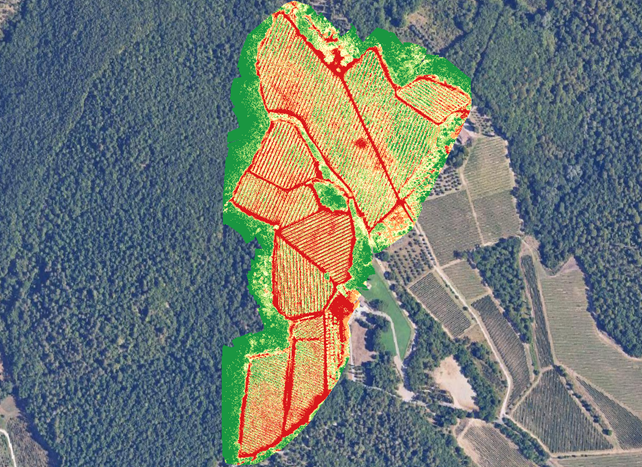
Fig.3: Vigor map obtained from NDVI index in vineyard.
Thermal sensors detect changes in canopy or soil temperature by measuring surface temperature. This sensor was created for the purpose of monitoring the efficiency of irrigation systems but can be used effectively to identify areas under water stress (stressed leaves tend to close their stomata and reduce evapotranspiration, increasing surface temperature) and for the assessment of frost/heat damage. The data collected by the sensor can be translated into a heat map (Figure 4) that allows analysis of areas characterized by heat stress.
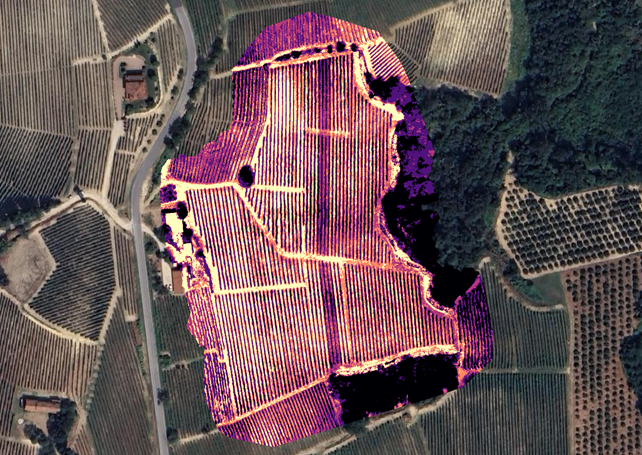
Fig.4: Thermal map of a vineyard based on drone survey with thermal sensor.
Finally, LiDAR sensors emit laser pulses and measure the time it takes for the pulse to be picked up by the receiver. The time taken is translated into distance and a point is generated. By repeating this process countless times, along a row of rows for example, the three-dimensional point cloud of the plant canopy can be constructed. Using the 3D model, it is possible to calculate biometric parameters of the plant (such as volume, height and density of the canopy) and create the “digital twin” (Figure 5 and Figure 6).
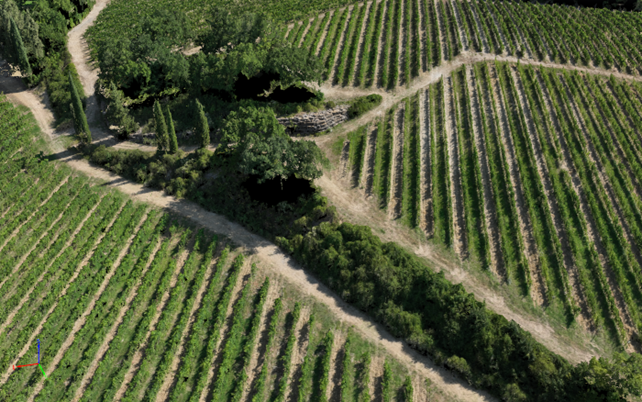
Fig.5: Digital twin of a vineyard.
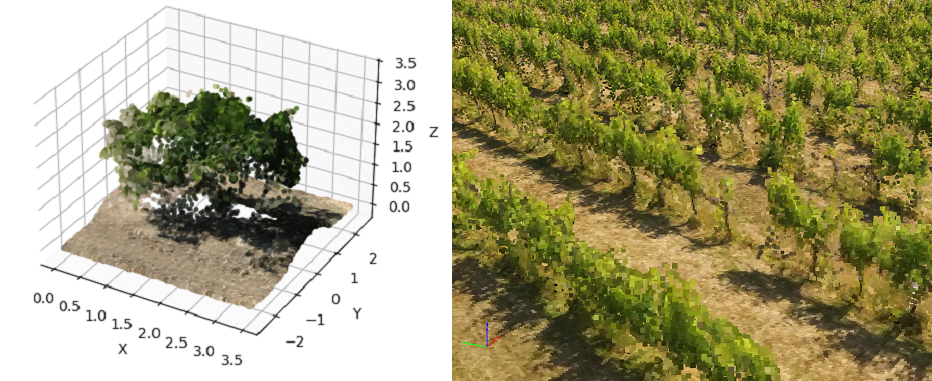
Fig.6: Digital twin of a citrus plant (left) and a row of vines (right).
Conclusions
The use of drone sensors allows the farmer to work more rationally and objectively, limiting the waste of resources and increasing productivity.
Despite the potential, it is very important to be aware of some limitations. The use of drones requires technical skills and a certified knowledge of regulations for flying in airspace. In addition, the management and analysis of data obtained from drone remote sensing should not be overlooked.
For these very reasons, an effective solution is to rely on Agrobit, which, with its iDrone service, provides expertise, technology and advanced infrastructure to bring precision agriculture directly to the field. With iDrone, the Agrobit team will take care of your field from planned flight to data collection, from map processing to decision support for the farmer. With iDrone, every flight is a winning choice!
